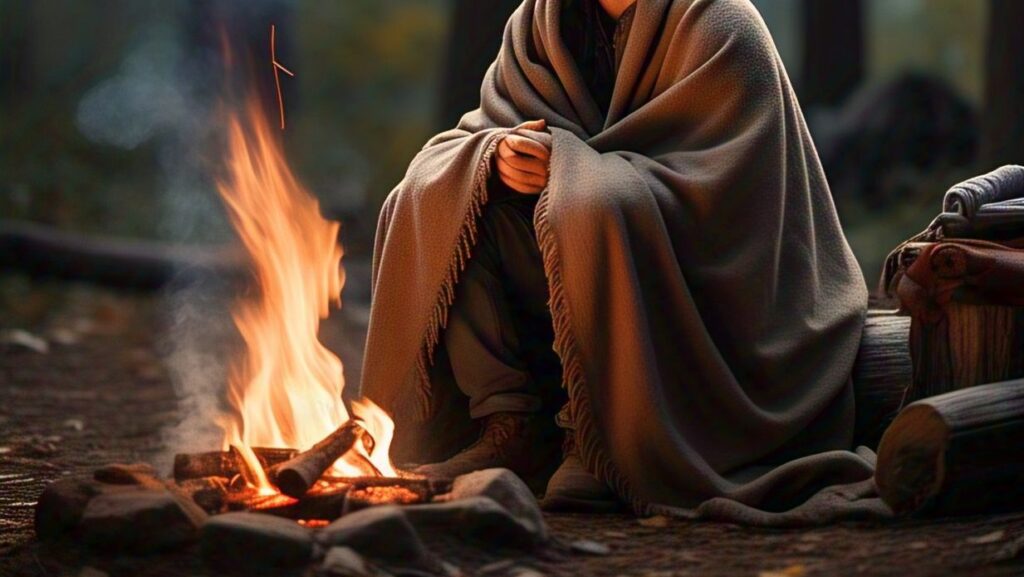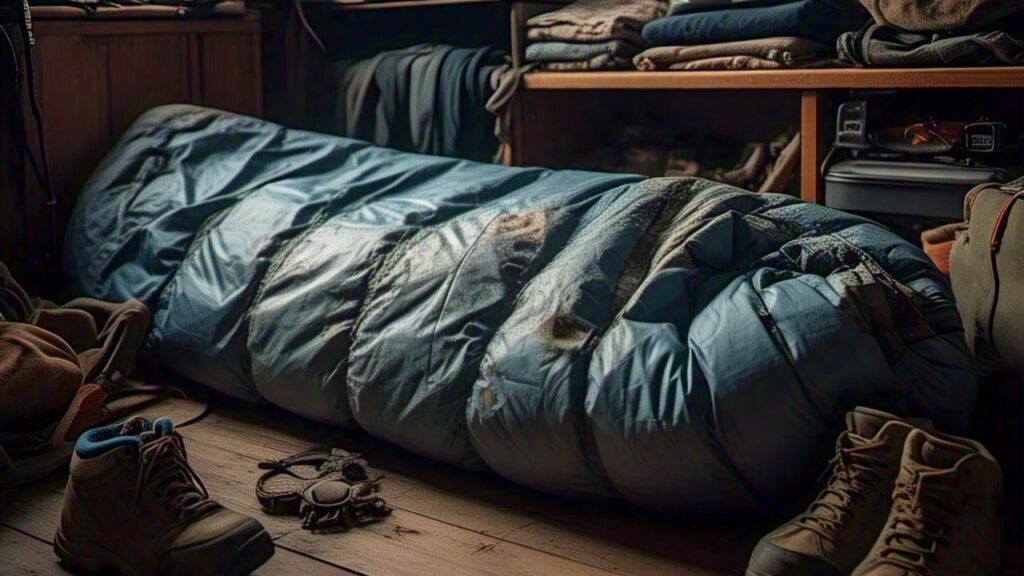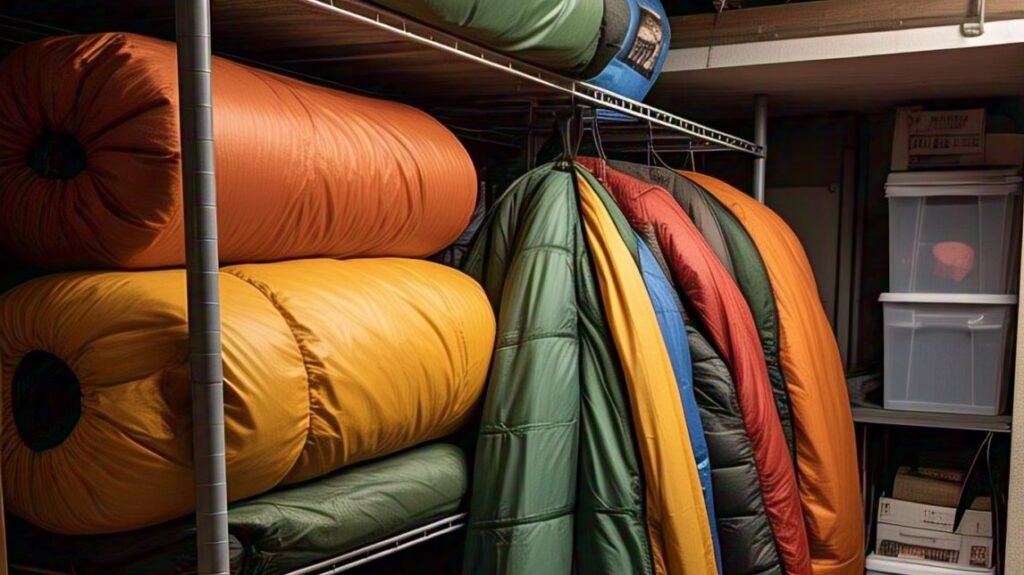A solid, budget-friendly sleeping bag for car campers who want warmth, easy storage, and handy features. Best for mild to moderately cold nights.
Features
Feature | Details |
|---|---|
Temperature Rating | 20 °F (-7°C) |
Weight | 4.5 lbs (2.04kg) |
Packed Size | 14″ x 9″ (35.5cm x 22.8cm) |
Dimensions | Envelope: 86.6″ × 29.5″ (220cm x 75cm) |
Shell & Liner Materials | Shell: 290T nylon; Liner: polyester pongee |
Insulation Type | Polyester fiber, 400 GSM (double‑fill technology) |
Zipper Design | Left‑zip or right‑zip options; weather‑strip; roll‑control design; can zip two bags together |
Other Features | Portable; waterproof; windproof; tear‑proof; compressible; drawstring hood; opens flat as blanket; machine washable |
Important Note: We do not test products ourselves. We sit through user reviews, and discussions regarding a product and present you the best products based on that information.
Pros & Cons
Pros:
- Warmth in Mild Cold: Keeps you warm in cool nights (mid‑30s–40 °F) as many users found it reliably toasty.
- Comfortable Lining: Soft polyester lining feels cozy against the skin, reducing need for extra padding.
- Portable and Packable: Compresses into a small, lightweight sack that’s easy to carry on hikes.
- Ventilation Options: Two‑way side zipper and separate foot zipper let you vent heat or free your toes.
- Double-Bag Option: Pairs to another bag for a double‑wide setup, ideal for couples or extra space.
Cons:
- Zipper Issues: Zipper often jams, unzips itself overnight, or even breaks after a few uses.
- Overrated Temperature: Rarely matches the 20 °F rating; users shivered below about 40 °F without extra layers.
- Tight Fit: Medium size feels narrow for average adults, limiting side‑to‑side movement.
- Difficult to Pack: Stuff sack is too tight, making the bag hard to pack back in by hand.
- Low-Quality Stitching: Hood drawstring and loose interior threads can snag or pull out easily.
Quotes From Other People
I didn’t get cold like I did from the last time I went hiking
Our Scorecard
Feature | Score (1–10) | Notes |
|---|---|---|
Temperature Rating | 4 | Rated for around 30–40 °F, needs extra layers in colder temps. |
Insulation Type | 5 | Polyester fill is basic; double‑fill helps but less warm than down. |
Weight | 2.28 | At 4.5 lbs it’s on the heavy side for backpacking. |
Fit & Shape | 7 | Envelope shape fits well but limits side‑to‑side movement. |
Other Features | 6 | Good waterproofing and zip options, but zipper issues noted. |
Overall | 4.8/10 | Mid‑range performance; ok for casual use but not for extreme cold. |
Final Verdict
A reliable choice for mild‑weather campers who need a packable, versatile bag.
Buy If:
- You camp in cool nights (35–45 °F) and want dependable warmth.
- You need a bag that packs small and stays light on hikes.
- You like the option to vent with dual zippers or zip two bags together.
- You value a soft liner and waterproof shell for comfort and dry sleep.
Don’t Buy If:
- You plan to sleep in temps below 40 °F without extra layers.
- You need roomy side‑to‑side movement or a wide fit.
- You hate wrestling with tight stuff sacks when packing.
- You can’t tolerate snaggy zippers or loose threads.
Grounded in user reports, this FARLAND bag hits mid‑range marks—warm and cozy for mild cold, highly packable, and zip‑flexible. But zipper jams, a snug fit, and heavyweight packing make it less ideal for true cold‑weather or ultralight needs.
You Might Also Like
Lightweight Sleeping Bag: Redcamp!
Coleman North Rim 0°F: Too heavy!
Frequently Asked Questions (FAQs)
Which brand of sleeping bag is good?
Look for brands known for consistent quality, clear temperature ratings, and good customer support. Check user reviews for real‑world performance and look for companies that back their bags with solid warranties.
What is the warmest type of sleeping bag?
Down‐filled bags with high fill‐power (800 FP or above) trap more air and provide the best warmth‑to‑weight ratio. Synthetic bags are warm when wet but usually heavier for the same rating.
How to tell if a sleeping bag is good?
- Temperature rating: Matches the coldest nights you’ll face.
- Insulation quality: High fill‐power down or dense synthetic fill.
- Weight and pack size: Light and compact for hiking.
- Fit and shape: Mummy fit for warmth or rectangular for space.
- Build quality: Strong zippers, no loose threads, solid stitching.
You must not fall for gimmicks.
Is a 5 °F sleeping bag warm enough?
A 5 °F rating means it should keep you comfortable down to about 5 °F in a curled position. If you camp in colder or windy conditions, plan extra layers or a sleeping pad with good insulation.




